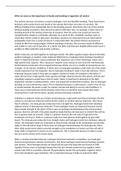Samenvatting
Summary Imperfect competition
summary covering the chapter about imperfect competition in microeconomics, the industry structure between perfect competition and monopoly. It describes different types of oligopoly and their characteristics.
[Meer zien]







